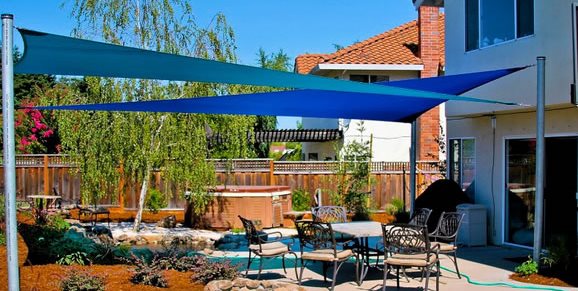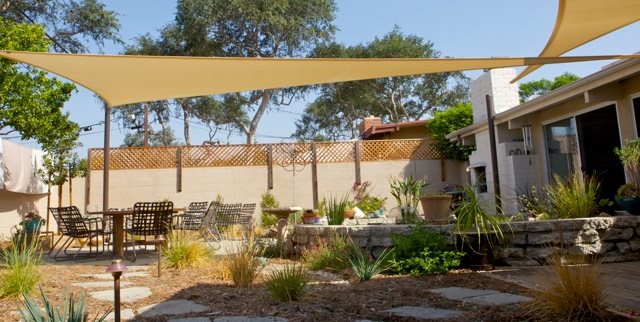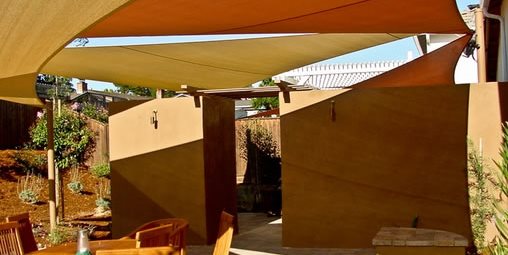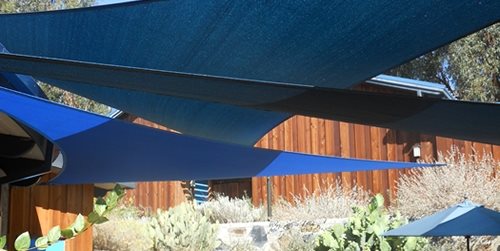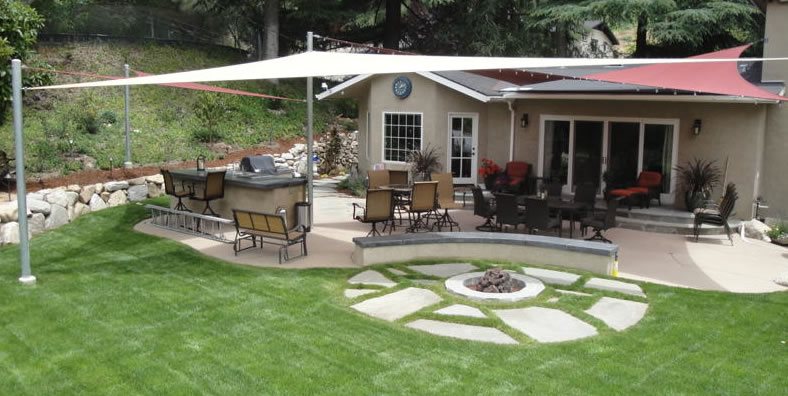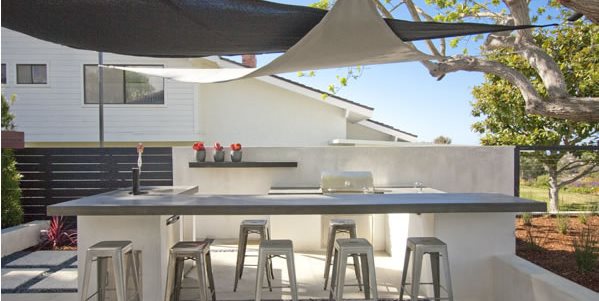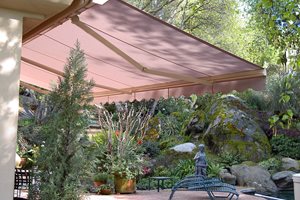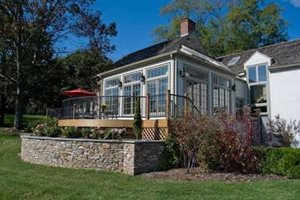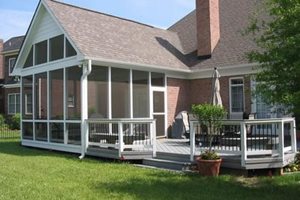Shade Sails
Ideas for blocking the sun with shade clothsShade sails are a way of providing comfortable shade in modern landscapes. Each sail is a strip of fabric that’s been specially-designed to withstand an incredible amount of pressure. Each sail is mounted to steel posts and tightened so it won’t flap or move even in wind speeds as high as 100 mph.
When to choose a shade sail
- With contemporary architecture
Since shade sails have the swooping, geometric look of a modern art installation, they look best with contemporary architecture. “I wouldn’t suggest a shade sail for a Craftsman or a Tudor home,” says Alison Terry, a landscape architect in Fullerton, CA. “But for a modern one-story house, it’s a great choice.” - When you want winter sun
Shade sails are one of the few ways of getting shade in the landscape that can be taken down each winter if desired. If you want to let as much light as possible into the house during the winter, a shade sail will work better for you then a pergola, which can’t be moved. - If your style is artistic
You can choose the color and size of shade sail you prefer, so if your landscape has a lot of creative touches or bold use of color, a shade sail will fit right in with that artful style. Of course, they’re available in neutral colors as well if your style is more laid-back.
Placement and design
Terry suggests starting the process by running string along the areas where you’re considering a shade sail, to see where the shadow falls. This way, you can make sure the shade sails will cast shade on the patio or window areas that are currently too hot.
Dan Berger of LandPlan's Landscaping, Inc. in Pleasanton, CA suggests having about 4-6’ of difference between one side of the shade sail and the other. “This allows the sail to shed the wind,” he says. In addition, if you’re using more than one sail, having a bigger height difference between each one looks more modern.
As for color, Terry suggests sticking with neutral tones. “Over time, certain colors can go out of style, but neutrals always look good,” she says. That’s not to say that a carefully-chosen palette can’t work, but since quality shade sails are guaranteed for 10 years and last for 20, make sure you won’t tire of the theme.
When not to use a shade sail
- To block rain
“Shade sails will block 80-90% of UV light, but they don’t keep rain out,” says Berger. - With fussy architecture
“If the architecture has a lot of detail, it doesn’t go as well with a shade sail,” says Terry. But Berger adds, “A lot of the time, the architecture is so benign that it doesn’t have a distinct style of its own, so a shade sail works well.” - If you’re looking for the cheapest solution
A simple wooden pergola with a lattice roof can run quite a bit less than a professional-grade shade sail. There is a deceptive amount of engineering and work involved in shade sail manufacture and installation.
Cost of shade sails
Shade sails cost around $6,000-8,000 each for an average-sized sail. Most residential installations use two or three sails to get good shade coverage and a crisp, modern look. However, for large areas or commercial installations requiring sails larger than 400 square feet, you’ll need to involve an engineer. The cost goes up exponentially for such large projects.
Don’t fall for cheap, ready-made shade sails that cost $400-600. “Shade sails have gotten a bad name because homeowners purchase these cheap sails and attach them to wooden posts,” says Berger. “They just fall to pieces,” he says. Terry echoes that point. “You can’t expect a $400 product to hold up as well as something that’s engineered and built to last,” she says.
Related Reading:
 Backyards
Backyards
 Front Yards
Front Yards
